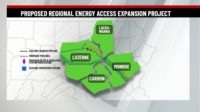As the Trump administration weighs the future of the Deferred Action for Childhood Arrivals (DACA) program, the construction industry is watching carefully for potential impacts as it continues to face a severe workforce shortage and relies on undocumented workers to fill craft and other positions.
“We’ve heard for years that we have a labor shortage [in Texas], and contractors are finally starting to feel the actual pain of it,” says Meloni McDaniel, president and CEO of Dallas-based TEXO, the state’s largest construction trade group.
“With DACA, it could be the start of some meaningful reform.”
– K. Paul Holt, CEO, Central Texas AGC
“Everything going on with DACA now affects our industry.” The Obama administration created the program in 2012 to allow individuals who entered the U.S. as children— the so-called “dreamers” of the DREAM Act—to remain for school or work. Work visas in place under the program expire on March 5.
McDaniel says TEXO is “working with a few companies on how we can solve it through worker programs, but we’ve got to come up with a plan to address this because, in Texas, 5.6% of the state’s GDP comes from construction. And when we feel that pain, the entire state is going to feel that pain.”
The most recent data from the Migration Policy Institute, a Washington, D.C., think tank that analyzes immigration patterns and issues, says construction is the state’s largest employer of undocumented workers, accounting for 23% of approximate 976,000 individuals aged 16 or older, based on 2014 U.S. Census data.
M. Ray Perryman, CEO of The Perryman Group, a Waco-based financial and economic forecasting firm, notes that, of the nearly 800,000 individuals in the U.S. now enrolled in DACA, about 124,300 live in Texas. But without congressional action, they face deportation when their work visas expire.
In a September 2017 report, The Perryman Group estimated there are about 250,000 undocumented construction workers in the state, about a third in the Houston area.
“Many of these workers are highly skilled and represent about 30% of the state’s construction labor force, with no replacements readily available,” said Perryman. He notes the risk to Hurricane Harvey reconstruction along the Texas Gulf Coast “as fears of deportation rise [and] it becomes increasingly difficult to access this critical resource.”
Eric Hedlund, senior vice president and Texas district manager of Sundt Construction Inc., says, “We have a lot of people who don’t really want to do this type of work, and it really gets to be a challenge to recruit the two million workers that we’ll be short by 2020, according to a study that [the Associated General Contractors] has done. That’s less than two years from now.”
K. Paul Holt, president and CEO of the central Texas AGC chapter, notes, “A lot of people have the misconception that our Mexican immigrant workers are all unskilled, and that is simply not true. They have a lot of skilled tradesmen and … while some come in as unskilled, they move up the food chain pretty well because of their capabilities.” Phil Thoden, CEO of AGC’s Austin-based chapter, observes that, based on a 2017 member survey, the percentage of undocumented workers on projects varies by work performed and owner requirements, such as mandated use of the E-Verify process on federal projects to confirm immigration status.
Holt is hopeful that deportations won’t happen since “common sense may take over and recognize this is an untenable solution.” Referencing the 1980s immigration reform effort during the Reagan administration, he says, “Since we’ve had another 30 years of not enforcing what was on the books, if we just enforced what was on the books, we could naturalize a lot of people.” Adds Holt, “It’s not amnesty but earned citizenship. With DACA, that could be the start to some meaningful reform.”







Post a comment to this article
Report Abusive Comment